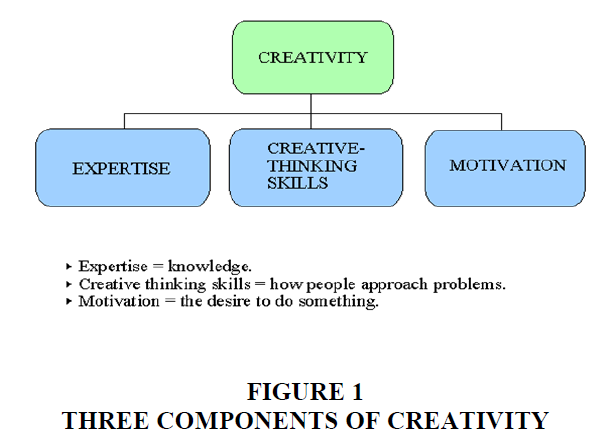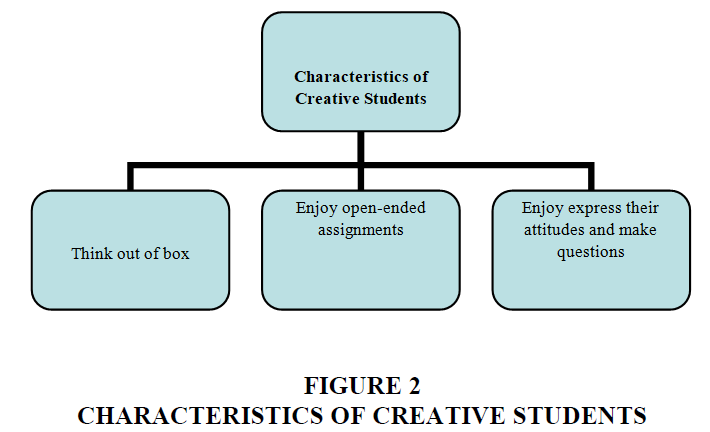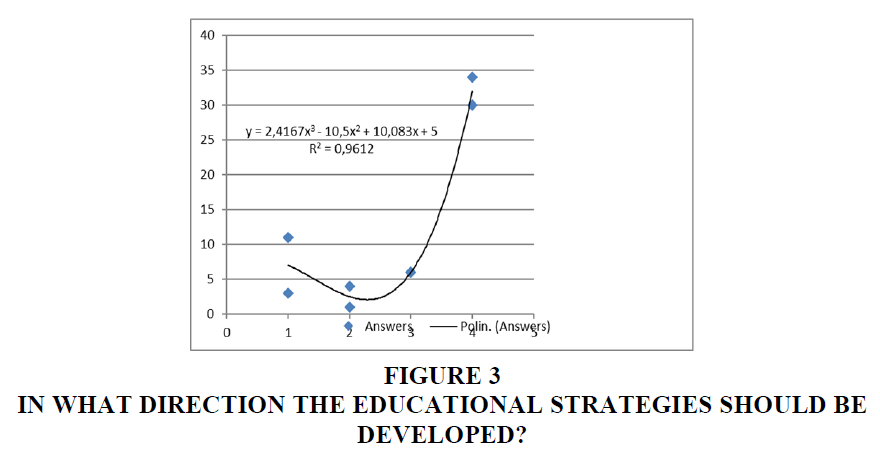Research Article: 2021 Vol: 25 Issue: 3
Learner Creativity among Entrepreneurship Students in Higher Education through E-Learning
Prof. Dr Mirjana Radović-Marković, South Ural State University, Russia
Miloš Vučeković, Singidunum University, Serbia
Prof. Dr Zorana Nikitović, Faculty of Business Economics and Entrepreneurship, Serbia
Mirko Milanović, Agricultural University, Bulgaria
Abstract
In this research the author tried to find the extent to which the education encourages creativity in higher educations. Accordingly, author conducted a survey amongst a group of students from the Belgrade Business School, Serbia. The sample consisted of 180 students from entrepreneurship section. The author firstly went through the theoretical background. Then, proposed the research methodology and elaborated the methodological concerns. In the paper is concluded that creative education and training should help students to raise their creativity and logical thinking. Primarily, the support to entrepreneurial activities through entrepreneurial education may contribute to the increase of the number of new companies and to reduction of the level of unemployment. Moreover, education increases the chances of entrepreneurial business success.
Keywords
Creativity, Cognitive Abilities, Education, E-learning
Introduction
In traditional learning systems, students are passive participants on all the education levels. Their personal creativeness is not encouraged, nor is challenged to think critically and originally. On completing the process of formal education they are capable of more or less successfully reproducing the information they learned in the course of their schooling, however, they have not learned to implement the acquired knowledge in practice .and use this knowledge as basis for creating new ideas. Considering the importance of education, it has recently become evident that the new Age is looking for new forms of education, such as creative education. In line with this, the aim of this paper was to explore methods to unleash creativity among students in higher education.
Theoretical Background
In the literature creativity has been regarded as a form of knowledge creation and how it can benefit learning opportunities (Craft, 2005). Creativity as a cognitive construct is multifaceted and has been represented from many perspectives as an aspect of Intelligence, as problem solving ability (Ryhammar & Brolin, 1999). According to (Corso & Robinson, 2013) creativity is the process of coming up with something new and different. Moreover, creativity and innovation have close links with knowledge and learning. Hence, creative education involves a balance between teaching knowledge and skills, and encouraging innovation. However, creativity is not well understood in the university environment (McWilliam & Dawson, 2008). Namely, it has long been thought to be characteristic of highly gifted and noble people; however, such an argument has been proved to be a wrong attitude. Although every individual has certain creative abilities, the extent to which these potentials will be developed largely depends on how much these abilities are encouraged and well treated. It is in this view that education plays a crucial role and significantly determines whether its outcome will be “passive imitators''or “active, creative contributors” (Radovic Markovic, 2012).
Research studies have shown that creativity can be trained (Corso & Robinson, 2013). The introduction of virtual environments into higher education has the potential to bring a positive change in the learning experience and make an impact on creative thinking (Liarokapis et al., 2011). The online learning environment is quite different from a traditional classroom. At the first place, it means that the online courses require participants to take on new and different teaching as well as learning behaviours. In addition, an e-learning content differs from other educational materials, i.e. it can be disassembled as individual learning objects, tagged, and stored for reuse in a variety of different learning contexts (Harris, 2005). “E-learning context is very important. It is common to find educators who perceive e-learning as internet-only education that encourages a static and content-focused series of text pages on screen. Others envisage the shallow and random online messages that are typical of a social real-time chat session, and wonder how that type of communication could add any value to academic discourse. Some may have experienced e-learning done poorly, and extrapolate their experience into a negative impression of all e-learning” (Demiray, 2009).
“Learning by doing” is a non-traditional approach in which students are actively engaged in experiences that will reinforce lessons and teach skills that will have a lasting impact and, thus, help them become better learners”(Dialogue Magazine, 2011). In this context, multiple perspectives take the educational experience beyond the classroom to cultivate real-world applications and to elaborate the matter in question. “Service learning, community-based learning, community action research, internships, study abroad, and similar experiences all provide opportunities for authentic learning that engage students in using their critical skills to understand and to better the world” (Association of American Colleges & Universities 2006).
Fostering creative abilities among students
Fostering creative abilities in an individual helps develop their intellectual potentials. This can be achieved through varied modern forms of studying, such as follow (Minovi? et al., 2013):
1. Video games;
2. Computer simulations of real practical situations that require from the student to solve the problem or make intelligent decisions;
3. Including students into research and projects and having them do their individual projects;
4. Networking students both within and without the school community so that they should share knowledge and experience;
5. Continuous discussions on certain topics, meant to develop critical thinking and personal attitudes, etc.
According to (Amabile, 1998s), “Creativity within each of us is a function of three components: expertise, creative-thinking skills, and motivation”.
The behavioural aspects should include the change in the students’ attitude to the manner of studying, as well as to the subject matter they are expected to master during the learning process. This primarily concerns more freedom in expressing their attitudes, which is the basis for fostering individuality (Figure 1 (Amabile, 1998); (Figure 2)). Besides, students are expected to be more independent in studying, while the role of the teacher/lecturer is reduced to that of the coach. Namely, teachers will be expected to supervise the students’ work and guide them. Thus they will help them become autonomous and self-confident which will ultimately result in the students’ greater autonomy and resourcefulness when engaged in the work process.
In our opinion, no impressive results can be achieved in enhancing creativity in the educational process without integrating cognitive and behavioural results. Hence new learning strategies have to observe both these aspects. Moreover, it is not only observing the strategies that matters, but also their developing and changing so that they should be geared to the needs of both the individual and the society as a whole. These changes cannot be one-sided, but should be viewed from the perspective of the student as well as from that of the teacher. The teachers will also be expected to be accomplished promoters of these changes in order that the effect of the new educational strategies is full. First of all, they will have to accept the role of a coach and be able to guide students in the desired direction, i.e., in the direction of enhancing their creativity, originality and logical reasoning. They should ensure a relaxed learning atmosphere (without stress), good communication and be always available to students (via modern technologies), show respect for every student and observe cultural, ethnic and gender differences. In order to achieve these goals, the teachers will become more creative and master more modern, multidisciplinary knowledge. These will in turn be achieved through permanent education, but also through learning together and sharing experiences in the student-teacher relation.
Case Study of Serbia
Serbia does not have extensive experience deploying online studies and virtual faculties. Forming an international learning network may enhance e-learning opportunities in Serbia as well as in countries that are developing or in transition (Radovic Markovic, 2014); (Radovic Markovic, 2007). Because the functionality of the technologies and the benefits of virtual learning to learners and professors have been misunderstood, the entrepreneurial process although improved in Serbia has been impacted due to the lack of awareness (Radovi? Markovi?, 2010). As (Radovi? –Markovi? et al., 2019) mention in their study, Serbia does not have long experience deploying online education and virtual faculties. Forming an international learning network may enhance e-learning opportunities in Serbia as well as in countries that are developing or in transition. Due to the functionality of the technologies and the benefits of elearning to students and teachers have been misunderstood, the entrepreneurial process although improved in Serbia has been impacted because of the lack of enough awareness (Radovic Markovic, 2014). An aggravating factor for faster development of Internet studies lies in the fact that the internet education in Serbia has a low level of interest among students. Furthermore, most of the students cannot imagine "classroom without walls", as well as quite a different way of learning (Radovic Markovic, 2012). If Serbians or citizens of other nations become more familiar with the techniques, potential learners as well as educators may be able to effectively discern the pros and cons of how e-learning would enhance and improve education (Radovi? Markovi?, 2010). Hopefully, recently a number of studies have been done in Serbia in order to investigate the different aspects of e-learning, especially in the field of business and entrepreneurship. Building a more inclusive distance learning environment in Serbia involves making technological choices built on flexibility and an ability to respond quickly to changes in constantly evolving technology and informational resources. Collaboration, involving teachers, mentors, and instructional designers who truly represent hard to reach learners, and a willingness to invest monies in developing a cyber-infrastructure that reaches all learners regardless of where they live will be crucial (Radovi?-Markovi? et al., 2009). Adoption of latest technological advancements (e.g. lecture capture system) is a hallmark of market-driven private universities. Among many other distinguishing features, lecture capture system (LCS) is the one which is being offered to enhance the flexibility of learning environment for attracting executive business students (Radovi? Markovi? & Mirjana, 2009); (Shoaib Farooq et al., 2017).
Methodology
The questionnaire is designed to investigate the concepts of "e-learning"/"distance learning" from the stand point of view of students. This Questionnaire is applied to Belgrade Business School, Serbia. The sample consisted of 80 people randomly selected. Our questionnaire contained ten questions. The majority of the students (i.e. 80.7 %) belong to age category 20-22 years. We conducted research in two phases- first in 2012 and second in 2016.In the first phase we considered how education can develop entrepreneurship skills but in second phase we explored whether students were encouraged to challenge themselves (to be creative) in their education process and what would be the most appropriate direction for the educational strategies to encourage creative abilities. Feedback from students can be an excellent platform for enhancing their creativity through education.
Key Findings
Below are some hints about the effectiveness of teaching behaviors and students’ accomplishment of creative objectives. In this context, education should encourage students to work collaboratively and ask questions creatively about ideas and issues across a range of disciplines. As creative thinkers, they try to imagine and explore alternatives, and to think in a different manner. ?Such an approach is required for a solid academic foundation and for enhancing their intelligence, including “soft skills” such as understanding, empathy and communication skills” (Kamlesh & Chetankumar, 2019); (Radovic Markovic & Markovic, 2012); (Shoaib Farooq & Radovi?-Markovi?, 2016). Most of the students considered that the quality of education could be enhanced by providing a full and appropriate curriculum for the students at the Business school built on the philosophy and practice of creative education. Namely, creative education and training should help people to raise their creativity (Radovic Markovic, 2012). Conditions of a creative learning include providing a supporting unusual idea, providing choice, utilizing creative strategies and techniques, encouraging multiple solutions, incorporating novelty, and providing constructive feedback (Drapeau, 2011) .
The findings on students perception regarding the most appropriate direction for the educational strategies to be developed in order to reach the above mentioned goal, i.e. to encourage the creativity of students show that the new educational strategies should encourage creative abilities. It is showed by regression y= 2,4167x3-10,5x2+10,083x+5 (Figure 3).
Our research shows that education based on freedom of learning and teaching helps to foster creativity. Accordingly, the existing education system should be redefined as well as educational programs (Radović Marković & Tomaš, 2019); (Radović-Marković et al., 2017). New technologies allow for exploration of new areas of learning and thinking. They could support creative learning and innovative teaching and foster individual potential.
Conclusion
Considering the advantages of creativity for different people at different levels, expecting widespread use of creative practices in education is a normal expectation. The creative practices in education should help learners to work on building their knowledge through defining things, which are especially important in their eyes, and in the process, strengthen their sense of self and individuality. They also involve developing students’ personal qualities, including a strong sense of responsibility in self and others. In other words, according to some authors, the new education model should be based on the individual’s growth.
New learning strategies and models will play an essential role in the future and encourage many of those who did not have enough ideas, courage or certain skills. In order to efficiently prepare for fast changes in society and work environment, education should provide necessary knowledge and practical skills for students. Accordingly, students have to be encouraged to creative and logical thinking and included in creation of case studies through e-learning programs in Serbia.
References
- Amabile, T.M. (1998). How to kill creativity: Keep doing what you're doing. Or, if you want to spark innovation, rethink how you motivate, reward, and assign work to people. Harvard Business Review (September-October): 77- 87.
- Corso, R., & Robinson,C.H. (2013),Enhancing creative thinking abilities through the use of social media. International Journal of Knowledge, Innovation and Entrepreneurship, 1(2), 92-105.
- Craft, A. (2005). Creativity in schools : Tensions and dilemmas. London: Routledge
- Demiray, U. (2010). E-learning Practices, 2, 2010.
- Drapeau, P. (2011). The creative classroom. Teachers Matter, 13, 30.
- Harris, J. (2005), E-learning strategy: Repurposing content. Chief Learning Officer, October, 24-8.
- Kamlesh , P., & Chetankumar , P. (2019). An experimental study on canvas lms platform with blended learning approach in computer engineering & information technology: An Evidence Of RK University. Journal of Entrepreneurship and Business Resilience, 2(2), 14-26.
- Liarokapis, F., Doulamis, A., & Vescoukis,V. (2011). Third international conference on games and virtual worlds for serious applications, VS-GAMES 2011, Athens, Greece, May 4-6, 2011 IEEE 2011.
- McWilliam, E., & Dawson, S. (2008). Teaching for creativity: Towards sustainable and replicable pedagogical practice.
- Minović, J., Radović-Marković, M., & Drašković B. (2013). Financial engineering education: The case study of financial modelling using games. International journal of engineering education, 29(3), 634-643.
- Radovic Markovic, M. (2007). Special benefits of E-learning for women: Sample of program enterpreneurship. Achakra, Priscilla. Gender and informal Economy: Developing, developed and transition countries, Lagos,ICEA and PRENTICECONSULT, 156-166.
- Radović-Marković., Mirjana., Nelson-Porter., Brenda., Omolaja., & Muhammad (2009). The new alternative women’s entrepreneurship education: E-Learning and virtual universities. Journal of Women's Entrepreneurship and Education, 1(2), 1-12.
- Radović Marković., & Mirjana. (2009a). Inclusive education and distance learning in Serbia in the book strengthening the educational and scientific collaboration among faculties of economics within v4 and countries of south Eastern Europe (ed. By Renata Vokorokosova i Janusz K. Grabara), Faculty of management, Czestochowa, Tehnical University, Poland, 2009., 14-27.
- Radović Marković, M. (2010). Advantages and disadvantages of e-learning in comparison to traditional forms of learning. Annals Of The University Of Petroşani Economics Universitas Publishing House Petroşani – Romania, 10(2).
- Radovic Markovic, M. (2012). Impact of globalization on organizational culture, behaviour and gender role. IAP, Charlotte, NC, US.
- Radovic Markovic, M., & Markovic, D. (2012a). New model of education: Development of individuality through the freedom of learning, Erudition,World Academy of Scieences and Arts.
- Radovic Markovic, M. (2014). Development of entrepreneurial innovative competences through e-learning: An evidence of Serbia. The IPSI BgD Transactions on Advanced Research, 10(2).
- Radović-Marković, M. (2015). Causality among dual education, reducing unemployment and entrepreneurial initiatives of youth in the countries of the Western Balkans. In: Leadership and organization development.
- Radović-Marković, M., Marković, D., Simović, V., Medić, Z., & Zivadinović, J. (2017). E-learning as a tool for empowering entrepreneurship. Journal of Women`s Entrepreneurship and Education, 3(4), 65-72.
- Radović Marković, M., & Tomaš R. (2019), Globalization and Entrepreneurship in Small Countries, New York, NY: Routledge, United States.
- Radović-Marković., Mirjana i Živanović., & Branko, (2019). Fostering green entrepreneurship and women's empowerment through education and banks' investments in tourism: Evidence from Serbia. Sustainability, 23(11).
- Shoaib Farooq, M., & Radović-Marković, M. (2016). Modeling entrepreneurial education and entrepreneurial skills as antecedents of intention towards entrepreneurial behaviour in single mothers: A pls-sem approach, In: Entrepreneurship: Types, current trends and future perspectives, Bar Code Graphics, NC.
- Shoaib Farooq, M., Maimoona Salam., Norizan Jaafar., Alain Fayolle., Kartinah Ayupp., Mirjana Radovic-Markovic., & Ali Sajid, (2017). Acceptance and use of lecture capture system (LCS) in executive business studies, Interactive Technology and Smart Education, Emerald Publishing Limited.


